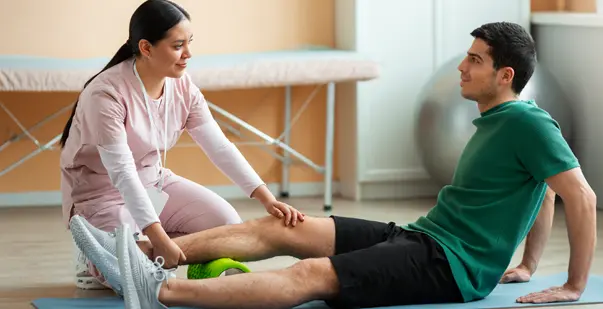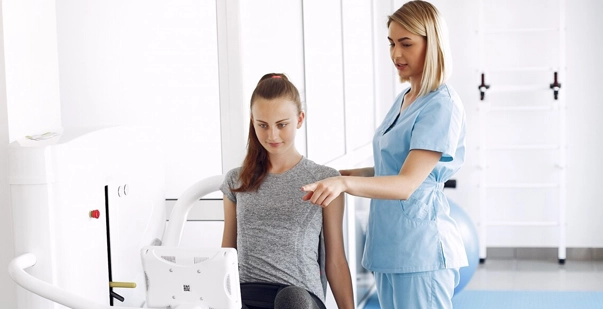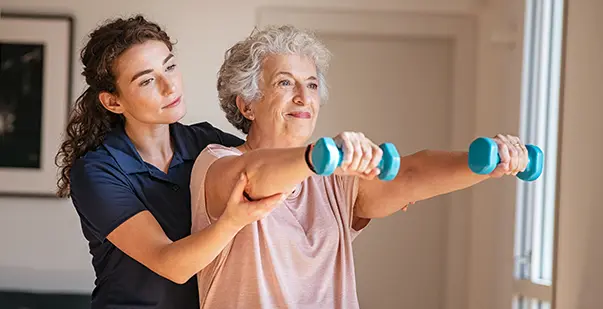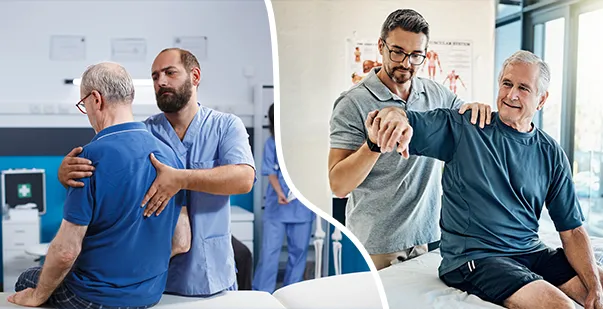Introduction
As you age, you may need more rehabilitation support to recover from surgery or an injury and to enhance your quality of life. In fact, around 2.4 billion people are currently living with a health condition that may benefit from rehabilitation. Two primary fields that often come to mind in such situations are physical therapy and occupational therapy. Although both have an important role in the healthcare system, they serve distinct purposes and address different aspects of an individual’s well-being.
If you are considering rehabilitation support and are confused about which one is right for you, this guide will help you learn about occupational therapy vs physical therapy.
Occupational Therapy Vs Physical Therapy - An Overview
While physical therapy and occupational therapy share similarities in their approaches to rehabilitation, they have distinct objectives and focuses. The primary difference is that occupational therapy aims to restore your ability to perform daily activities, while physical therapy focuses on improving physical mobility and strength. The table below summarizes the key differences between occupational vs physical therapy:
Read More: Advanced Techniques in Physical Therapy Continuing Education Courses
What to Expect in a Physical Therapy Session?
Now that you know what occupational therapy vs physical therapy is, it's time to explore the practices involved in these rehabilitation methods. Physical therapy treatment involves the following practices,
Assessment and Evaluation: Your physical therapist will begin by thoroughly assessing your condition and determining the best exercises to restore mobility.
Therapeutic Exercise: Physical therapy includes exercises designed to improve strength, flexibility, endurance, and coordination. These exercises target specific body parts and help you engage in regular movement.
Modalities: Your therapist may use modalities such as heat, cold, electrical stimulation, or ultrasound to manage pain, reduce inflammation, and promote healing while minimizing discomfort.
Gait Suffering: Gait training focuses on helping patients walk smoothly and maintain balance while performing daily activities.
Balance and Coordination: Physical therapy enhances balance and coordination by engaging the brain and nervous system to help you move safely and confidently.
Home Exercise Programs: If visiting a clinic regularly isn’t possible, your therapist can provide home-based exercises or visit you directly to ensure therapy is completed conveniently in your home environment.
Read More: Exploring Online vs. In-Person Physical Therapy
What to Expect in An Occupational Therapy Session?
Occupational therapy supports individuals with disabilities, injuries, or illnesses and helps older adults manage conditions such as arthritis to prevent further complications. Occupational therapy incorporates various methods and advanced techniques, including:
ADL Training: Activities of Daily Living (ADL) training helps individuals achieve independence in performing routine tasks such as bathing, dressing, eating, and more.
Fine-tune Motor Skills: Fine motor skill training improves coordination and control of smaller muscle groups, helping individuals perform tasks that require precision, such as writing, buttoning a shirt, or grasping small objects.
Sensory Integration Activities: They help individuals regulate their sensory responses and improve their decision-making abilities in various situations.
Workplace or School Assessment: Occupational therapy includes evaluating workplace or school environments to improve ergonomics and daily task efficiency. Recommendations may involve adjusting equipment or practices to support an individual’s functional needs.
Assistive Technology Training: This training helps individuals become proficient in using assistive devices such as wheelchairs, walkers, and speech recognition tools. These devices enhance comfort and make daily activities easier for people with disabilities.
Cognitive Rehabilitation: Cognitive rehabilitation is designed for individuals with neurological conditions. It focuses on improving memory, attention, problem-solving abilities, and overall functional skills.
Read More: 7 Benefits of Physical Therapy Training for HealthCare Providers
Benefits of Undergoing Physical Therapy
Now that you know about occupational therapy vs physical therapy, it's time to explore the benefits. Physical therapy is highly individualized, with each session tailored to a patient’s unique needs and abilities. Here are some key benefits of physical therapy:
Pain Management
Physical therapists effectively reduce pain caused by musculoskeletal disorders, injuries, or chronic conditions. Through targeted exercises and advanced techniques, your therapist will alleviate discomfort and help you return to activities you love, whether it’s playing sports or engaging in physically demanding tasks. They focus on strengthening weakened areas and modifying movements to minimize pain.
Improved Mobility and Function
Physical therapy restores mobility and overall function for individuals recovering from surgery or traumatic injuries. Your therapist will recommend Ccustomized exercise programs to improve flexibility, balance, coordination, and strength, enabling you to regain independence in performing physical activities.
Injury Prevention
Physical therapy treats current injuries and teaches strategies to prevent future ones. Therapists help identify movement patterns and biomechanical issues that increase the risk of injury. Sessions include personalized exercise routines and ergonomic recommendations to reduce the likelihood of recurring injuries.
Read More: Advantages of Online Certifications for Physical Therapy Assistants
 Benefits of Undergoing Occupational Therapy
Benefits of Undergoing Occupational Therapy
When you compare occupational therapy vs physical therapy, engaging in occupational therapy will improve your ability to participate independently in daily activities. The goal is to identify tasks that challenge your abilities and address them effectively. Let’s uncover some of the benefits of undergoing occupational therapy:
Improve Range of Motion
Your joints may experience limited motion after surgery, a stroke, or arthritis. Occupational therapy helps stimulate motion performance through small joint-lifting movements, known as the active assistive range of motion. Your occupational therapist will help you achieve proper body positioning, such as lying on your back or side, to promote the full return of independent function. When positioned correctly, gravity’s resistance decreases, enhancing joint mobility and making movement easier.
Enhanced Recovery
If you have undergone a surgical procedure, such as ligament repair or joint replacement, occupational therapy is an integral part of your recovery process. Your therapist will help you through post-operative exercises to manage pain, reduce swelling, and facilitate a safe, smooth recovery.
Home Safety Assessments
Occupational therapy supports your ability to live independently, even when facing a disability or age-related challenges. A home safety assessment conducted by a trained specialist evaluates the safety aspects of your living space. This includes identifying clutter obstructing walkways, ensuring adequate lighting, and other modifications to create a safer and more functional environment.
Read More: The Importance of Continuing Education in Physical Therapy
Which One is the Best in Occupational vs Physical Therapy?
Occupational and physical therapy are two distinct approaches, each with a unique focus and set of interventions. Being aware of the distinct yet complementary roles of occupational therapy vs physical therapy helps you make informed decisions if you are seeking personalized rehabilitation services. A Physical therapist will help you restore your mobility after injury or surgery. On the other hand, the occupational therapist will improve your overall quality of life through enhanced daily living skills due to cognitive or psychological issues.
Facilitate the Future of Integrated Care!
Modern healthcare is moving toward a combined approach where both therapies work together. This integration helps patients receive more complete care that addresses both their physical needs and daily living skills. For example, someone recovering from a stroke might work with both therapists. The physical therapist helps them regain strength and balance, while the occupational therapist helps them relearn daily tasks like eating or dressing. This collaborative approach leads to better outcomes for patients.
If you want to positively impact people’s lives through healing, sign up for a physical/occupational therapy course. The course will help you address patients' multifaceted needs and ensure their holistic well-being.
References:










.webp)






.webp)



